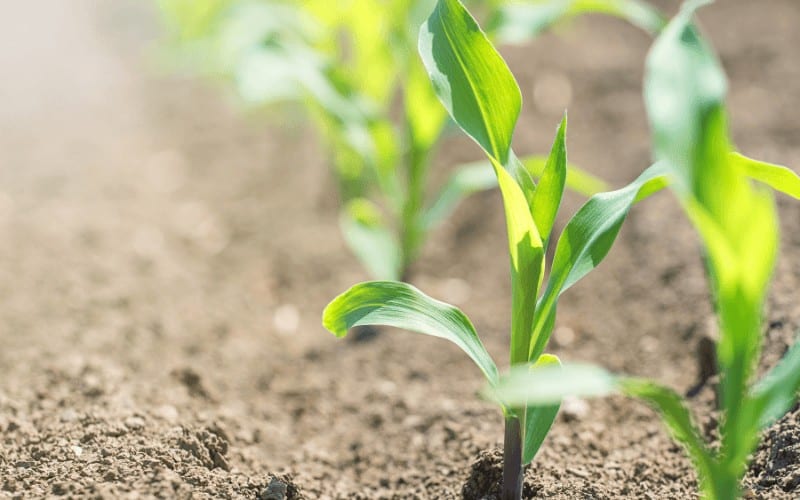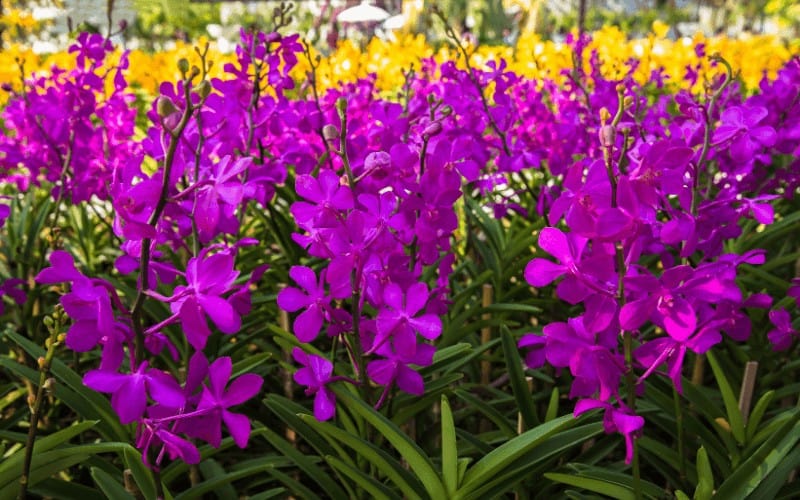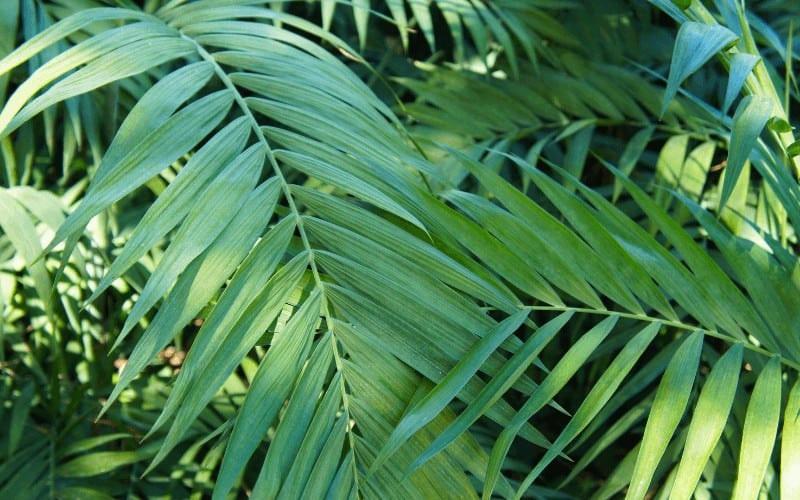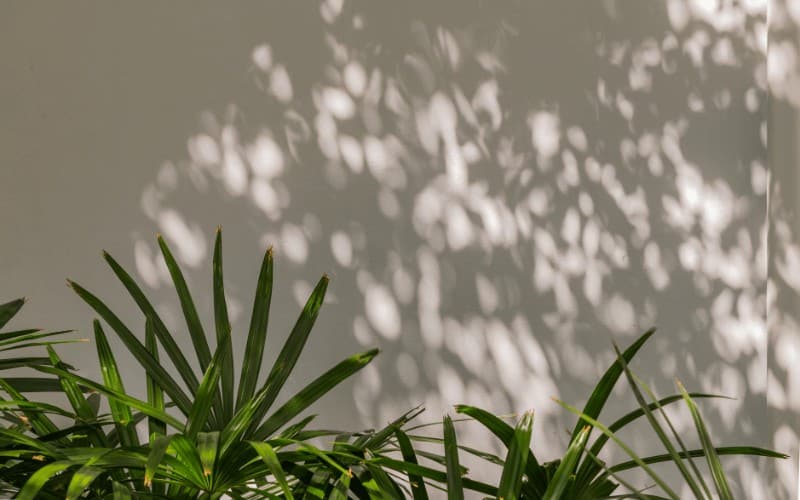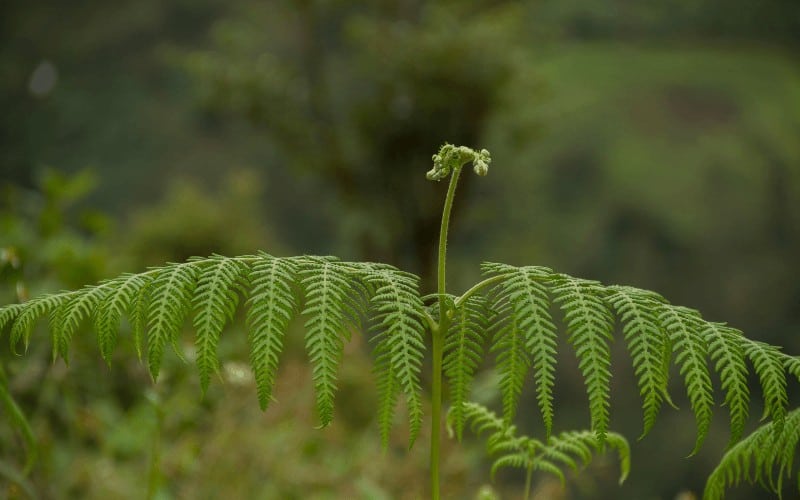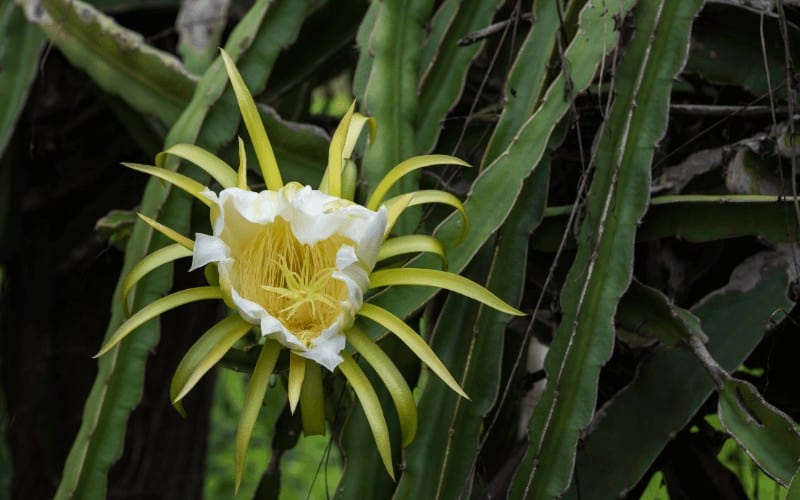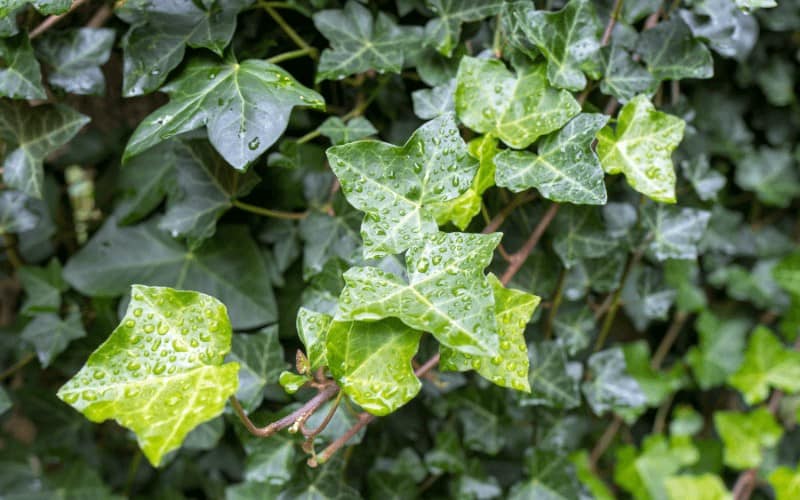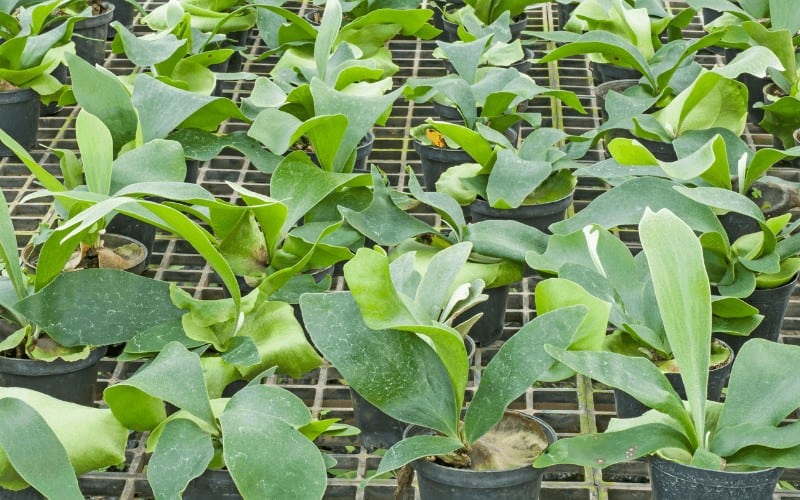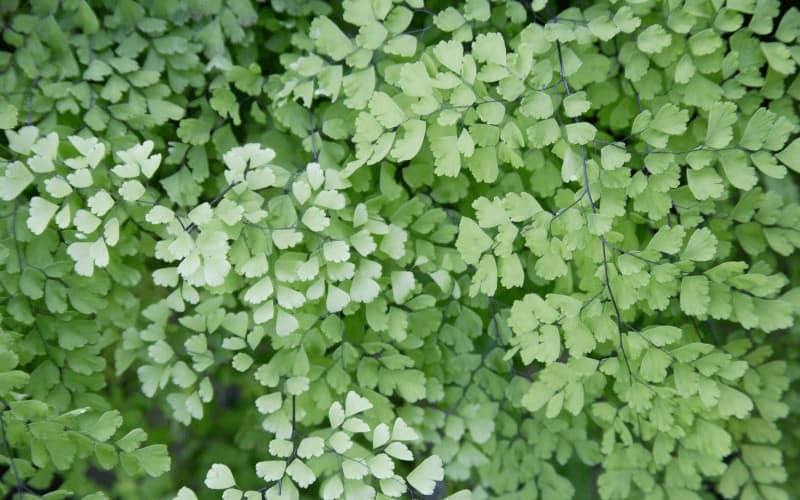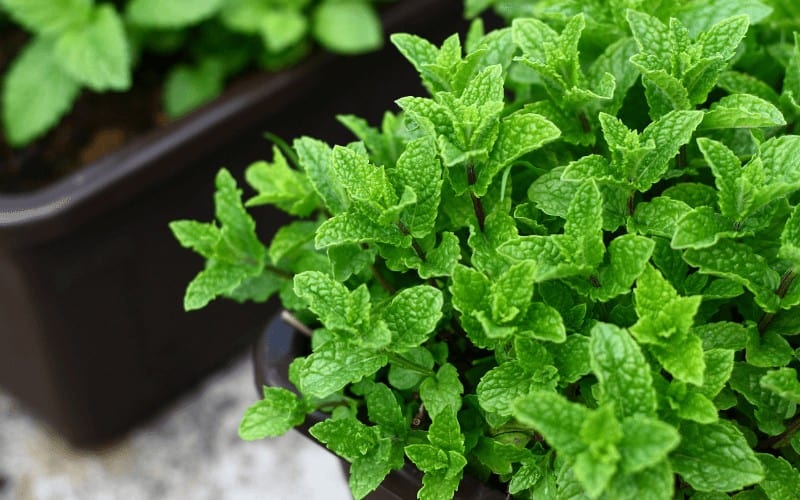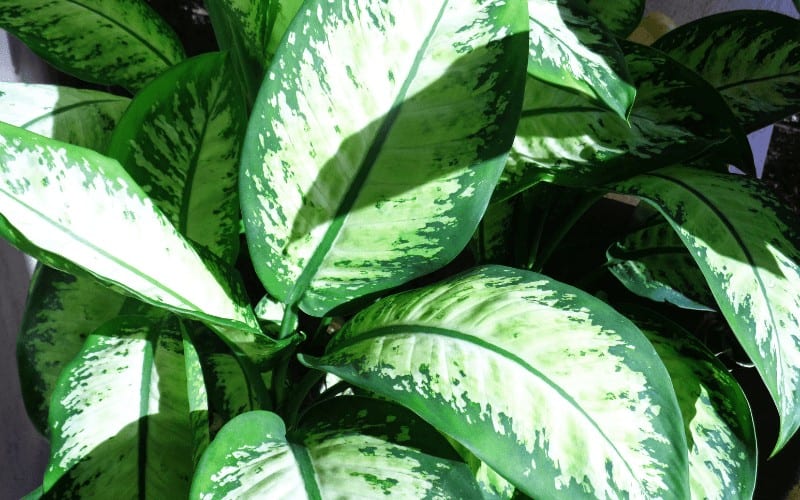The plant kingdom is the largest and most diverse kingdom known to man. There are just so many of them, each with its own unique characteristics.
Yet with all that diversity, it is common knowledge that plants need water, carbon (IV) oxide, and light to grow. But do they all need light to grow?
In this article, we would look at 15 plants that grow in the dark. These plants are exceptions to the rule.
Let's check them out!
Table of Contents
15 Plants That Grow in the Dark
1. Chinese Evergreen (Aglaonema)

This plant has leaves that come in different colors. The colors are usually in shades of green, yellow, pink, and red. Instead of getting those expensive and difficult-to-maintain flowers, you can simply plant your Chinese evergreen and watch its beauty wow you.
The plant is tough, it can withstand a long period of time without water. It is also a good choice if you are going to drop it in a place that has little or no sunlight.
The color of the leaves determines how much light the plant needs. The greener the leaves, the better it would thrive in the dark.
2. Prayer Plant (Maranta leuconeura)
When it gets dark-or when you place the prayer plant in the dark, the leaves fold, like human hands in prayer. That is why it is called the prayer plant. The plant is another colorful option that can be used to beautify your home.
It has oval leaves with pink vein lining the leaves. You can also find ones with purple, green, red, and yellow veins. They are quite a good choice to place beside doors.
The plant can tolerate darkness. In fact, for the colors to be sharp, the prayer plant has to be kept in the dark. Make sure the plant is on moist and humid soil and you have got yourself a beauty.
3. Corn Plant (Dracaena fragrans)
This plant does not require you to pay much attention to it. It looks like the palms of the tropics and it can light up that dark space in your house with its bright green color.
The plant is quite common in houses and offices. A variety dracaena called dracaena massangeana is large and can be used to decorate the floor instead of tabletops and shelves.
They can grow well in medium, low, and no light if need be. Aside from the beauty, the dracaena is also an air-purifier. It can take away unpleasant and harmful things around the air of your home.
4. Moth Orchid (Phalaenopsis)
This plant is specifically cultivated for its beauty. The plant is one of the most crossed plants in Asia and Australia. It is crossed so that the flowers budding would come in hybrid colors. There are purple, pink, and white moth orchids.
The moth orchid needs moisture for it to grow properly. A selling point of the moth orchid is that it does not even need much soil to grow. It also does not need light. The leaves of the plant are leathery and broad. The moth orchid is easy to cultivate and also quite easy to take care of.
5. Chamaedorea elegans bella (Dwarf Palm)
This is one resilient plant that can survive in low light and water, much more than other normal plants. It is simply made for indoor decoration.
The palm plant is another one that can serve as an air purifier. The height of the plant is dependent on whether it was planted indoors or outdoors.
When planted indoors it can get up to seven feet tall. Indoors, they can only be four feet tall. The plant is beautiful too, with tiny fronds and eaves that are green and narrow.
6. Howeia forsteriana (Kentia Palm)
This is a strong plant that does not need much-taking care of. The leaves are dark green in color. For the kentia palm, do not place it in a huge container, this will simply make the plant die. Ensure that the plant is also being watered regularly.
The kentia palm is not just an indoor plant, it can also thrive outdoor so far, the weather outside is not freezing. The plant is one for the tropics and can survive quite well in medium, low, or no light.
7. Table Fern
A common characteristic of many of the plants mentioned in this article is the ability of the plants to grow without much supervision.
The table fern is another one that does not need to be dotted on to grow properly. Table ferns grow well under shade or dark. Only a few of them want direct sunlight and constant watering.
Though it is called a table fern, this plant is normally used to make fern walls that adorn the fence of gardens. The fern can also be potted and kept indoors. They have attractive leaves that can beautify rooms.
8. Dragon Plant
This is an easy plant to cultivate and does not need a lot of attention too. It can be planted outside or planted in a pot for indoor purposes.
The rate at which the dragon plant grows is high and this is due to the deep root. It does not require much sunlight to function properly.
Due to the size of the dragon plant when it begins to mature, it is advised that those who want it indoors should get a container that has a diameter of 7 to 17 inches and 12 inches deep. The Dragon plant does not do well in winter, so it is advisable you move them from outside into the house.
9. Hedera helix (English Ivy)
This plant is a climbing plant with stunningly beautiful leaves. It is mainly used to adorn the walls of gardens or house fences. The best place to place the English ivy is a place that allows its vines to stretch and grow as much as possible.
When you are growing the ivy from the seed, you have to give it time, it takes years for the vines to grow. English Ivy does not like the direct rays of the sun; it prefers just little light for its bright colors to show. It can as well grow in low light or darkness.
10. Platycerium (Staghorn Fern)
The staghorn fern is an exquisite plant that does not grow just about anywhere. It is quite picky with living conditions. The staghorn fern is also called elkhorn fern or antelope ears. This is one of the plants that perform well under shade or dark.
Direct sunlight from the sun does not go well with staghorn, neither does artificial light work. The fern must be planted on moist soil and placed in a well-shaded area for it to thrive.
11. Calathea makoyana (Peacock plant)
This plant is one that has been called a lot of names. It is called zebra plant, rattlesnake plant, and cathedral window. These names come from the colorful foliage which many people say looks like that of the peacock’s feathers.
And just like the bird, peacock plants like to show off. Not only that. It likes to be taken care of very well. The water needed for the peacock plant is rain or distilled water and it thrives more in moist soil.
The Peacock plant loves medium and extremely low lights. When it is exposed to bright sunlight, it tends to become sad and dull and pale markings cover the leaves. It is best planted in a dark or shady place.
12. Adiantum (Maidenhair Fern)
This is one of the most elegant looking plants on this list. It can beautify the room; it can also look fabulous in the garden.
One disadvantage of the fern though is that it can easily be displaced or killed. So, for the pretty leaves to keep showing, the planter has to put in extra work.
The maidenhair fern loves medium light. It can also thrive in shady or dark places. It is affected by direct light. The fern loves humid and moist soils like the peacock above. The best water to use for it is distilled water.
13. Mint
This is an invasive plant that can also thrive in shady or dark areas. It grows at any time of the year and can also grow in warm or cool climates.
The mint plant does not lose its flavor or potency as the year rolls by. The scent of the mint is also an attractive feature. Mint is best planted in moist soil. The plant is quite easy to grow but difficult to manage.
14. Succulents
Another plant that does not need a lot to survive is a succulent plant. This plant can survive on the outside. It can also survive on the inside, with little or no light.
It can adapt to dark conditions and they can also adapt to no water conditions. The succulents are beautiful and come in varying colors. The succulent will turn your sitting room into an art studio.
15. Arrowhead/Syngonium
This is a fine plant with light green foliage. It is also quite easy to plant and grow. It is quite popular in offices and homes. It can grow in medium, low, or shady spots.
The arrowhead dreads the sun and gets bleached when it stays under the sun for some time. Care should be taken that no child or animal eats the arrowhead as it is toxic.
Recommended Readings:
Conclusion
Isn’t it weird that despite sunlight being the major source of energy and catalyst for plant growth, some plants defy this odd and thrive in the dark?
The aforementioned plants are some of the ‘unusual’ plants that grow in the dark. We hope that you provide them with the optimal conditions they require to do well. And this includes the absence of sunlight.


